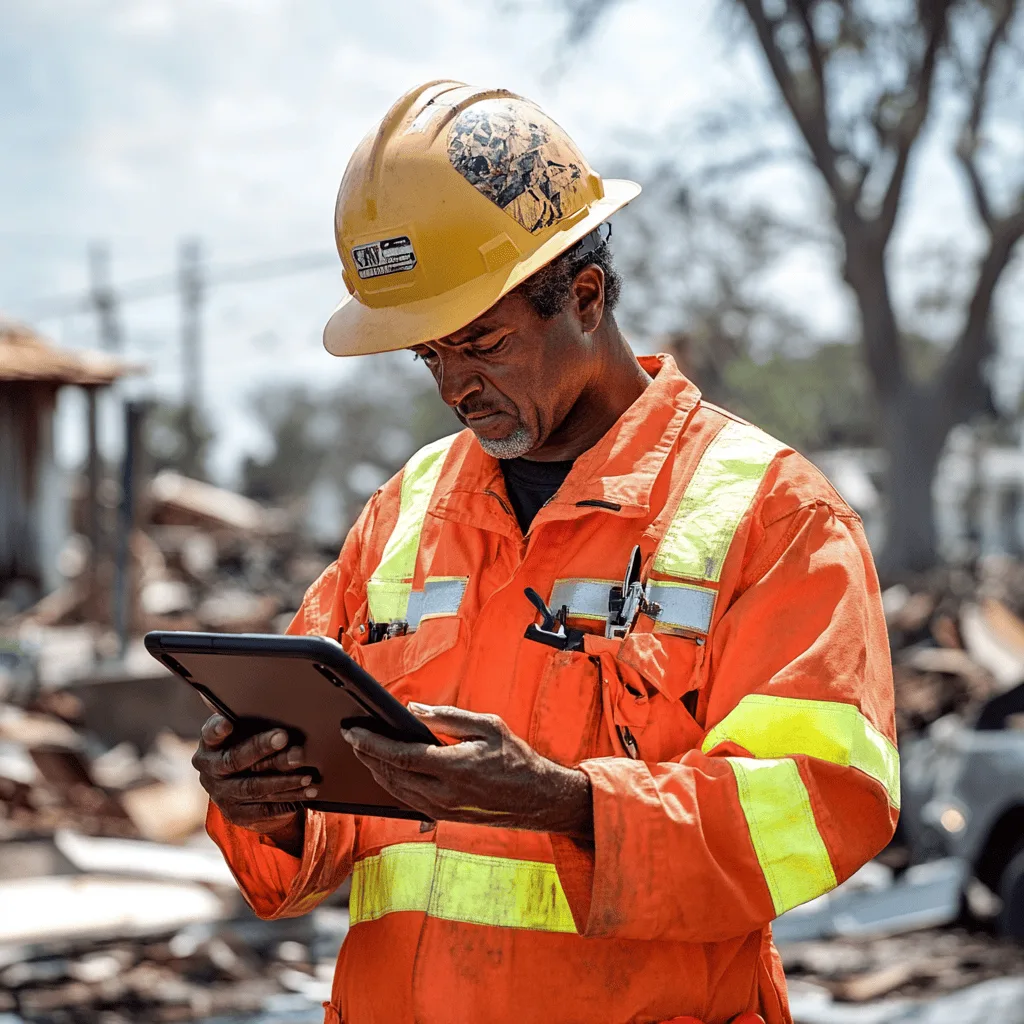
What is the Role of a Mass Notification System?
A mass notification system (MNS) plays a crucial role in rapid and efficient communication during emergencies or critical events. It enables organizations to deliver important messages to a large number of people simultaneously, ensuring timely and accurate information dissemination.
Key roles of a mass notification system:
- Emergency Alerts: In case of disasters like natural calamities, active threats, or health crises, mass notification systems can send immediate, real-time alerts to individuals, guiding them on safety measures, evacuation procedures, or other necessary actions.
- Timely Updates: During ongoing events, MNS provides real-time updates, keeping people informed about the emergency situation’s progression and any changes in instructions.
- Critical Event Management: By facilitating communication between organizations and their stakeholders, MNS helps coordinate response efforts, allocate resources, and manage the crisis effectively.
- Public Safety: MNS can be used to disseminate public safety information, such as Amber Alerts, missing person reports, or community advisories.
- Business Continuity: In case of disruptions or incidents affecting operations, MNS can be used to communicate with employees, customers, and partners, minimizing downtime and maintaining business continuity.
Key Features of an Emergency Mass Notification System
A robust emergency mass notification system (EMNS) is vital for effective communication during crises. Here are some key features to look for when selecting such a system:
Multi-Channel Capabilities
- Multiple communication channels: The system should support various communication channels, including SMS, voice calls, email, social media, and mobile app notifications.
- Channel optimization: The system should intelligently select the most appropriate channel based on recipient preferences, location, and the nature of the emergency.
Geo Targeting
- Precise targeting: The ability to target specific geographic areas or locations ensures that messages reach only those who are directly affected.
- Dynamic boundaries: The system should allow for the creation of dynamic boundaries to accommodate changing situations or evolving emergency zones.
- Boundary integration: The system should allow the import of notification boundaries using common Geographic Information System (GIS) file formats.
Integration with Other Systems
- The EMNS should integrate seamlessly with existing systems such as map based emergency management solutions, and web based emergency operations center solutions.
- Integration allows for efficient data sharing and coordinated responses, ensuring a unified approach to crisis management.
Scalability
- The system should be capable of handling large volumes of messages and recipients without compromising performance.
- The system should be scalable to accommodate future growth and expanding communication needs.
Reliability and Redundancy
- The system should have a high uptime and be resilient to failures or disruptions.
- Redundant infrastructure and backup systems help ensure uninterrupted communication during critical events.
- The system should include robust technical support that can be accessed 24/7/365.
Reporting and Analytics
- The system should provide detailed reports on message delivery rates, response times, and recipient engagement.
- Analytics can help identify communication gaps, measure the effectiveness of messaging campaigns, and refine crisis response strategies.
Security and Privacy
- The system should have robust security measures to protect sensitive data and prevent unauthorized access.
- Adherence to data privacy regulations (e.g., GDPR, CCPA) is essential to maintain trust and credibility.
11 Best Mass Notification Software Solutions to Consider
1. Perimeter
Perimeter is the leading integrator with emergency mass notification systems, offering a modern solution for organizations to effectively communicate with their stakeholders during critical events. With a focus on reliability, scalability, and ease of use, Perimeter enables organizations to reach a wide range of recipients through multiple channels, ensuring timely and accurate information dissemination.
Key Features
- Multi-channel communication: Supports various communication channels, including SMS, voice calls, email, social media, and mobile app push notifications, allowing for flexibility and reaching a diverse audience.
- Geo-targeting: Enables precise targeting of messages to specific geographic areas or locations, ensuring that only those directly affected receive critical information through zone export or direct integration.
- Integration with existing systems: Seamlessly integrates with other systems, such as map based emergency management solutions, and web based emergency operations center solutions,, streamlining workflows and enhancing overall emergency preparedness.
- Scalability: Designed to handle large-scale communications, ensuring that Perimeter can effectively reach a vast number of recipients without compromising performance or reliability.
- Reliability: Offers a high uptime and robust infrastructure, ensuring that critical messages are delivered reliably and consistently, even during times of high demand or network disruptions. Includes robust technical support that can be accessed 24/7/365.
Primary Use Cases of Perimeter:
- Road Closures: Perimeter supports closed routes and can be used to communicate road closures and traffic slowdowns with allied agencies and the community.
- Severe Weather: Perimeter supports the development and publication of impact areas related to severe weather events.
- Evacuation zones: Perimeter allows users to activate pre-planned zones, or to create zones “on the fly” based on dynamic incident needs.
- Other data points: Perimeter allows users to activate pre-planned data points such as shelters, resource distribution sites, incident locations, etc. Users can also place these data points “on the fly” based on dynamic incident needs.
- Routine operations and planned events: Perimeter can be used to support routine operations and planned events as well as emergency situations and disasters.
Advantages of Using Perimeter
- Rapid and reliable communication:
- Multi-channel reach: Sends notifications through various channels like voice calls, text messages, emails, social media, and mobile apps.
- Geo-targeting: Targets messages to specific locations, ensuring only relevant information reaches the audience.
- Enhanced emergency management:
- Disaster planning: Helps organizations develop comprehensive emergency plans.
- Response coordination: Facilitates communication and coordination among emergency responders.
- Recovery support: Provides tools for post-disaster recovery efforts.
- Improved safety and security
- Crisis management: Helps organizations effectively manage crises and minimize their impact.
- Public safety: Enables organizations to share important safety information with the community.
2. Everbridge
Everbridge is a leading global provider of critical communication solutions. It offers a comprehensive platform that enables organizations to reach and engage their stakeholders during emergencies and critical events.
Key Features
- Multi-channel communication: Supports various channels like SMS, voice calls, email, social media, and mobile app push notifications.
- Geo-targeting: Allows for precise targeting of messages based on location, ensuring only those affected receive critical information.
- Two-way communication: Enables recipients to respond to messages, ask questions, and provide feedback.
- Analytics and reporting: Provides detailed insights into message delivery, response rates, and recipient engagement.
- Integration with other systems: Seamlessly integrates with HR databases, security systems, and incident management platforms.
Limitations
- Mass notification tools that require prior opt-in from users tend to have a low sign-up rate
- Notifications include text-based descriptions of evacuation areas and routes, rather displaying that data on a visual interface, which can confuse community members
3. InformaCast
InformaCast is a trusted provider of mass notification solutions, offering a range of products for both internal and external communications.
Key Features
- Handles large-scale communications, making it suitable for enterprises and local government agencies.
- Ensures high uptime and message delivery rates, even during peak usage.
- Allows for customization of messages and templates to meet specific communication needs.
- Integrates with various systems and platforms, including security systems and contact centers.
- Adheres to industry standards and regulations, ensuring data privacy and security.
Limitations
- Mass notification tools that require prior opt-in from users tend to have a low sign-up rate
- Notifications include text-based descriptions of evacuation areas and routes, rather displaying that data on a visual interface, which can confuse community members
4. AlertMedia
AlertMedia is a cloud-based mass notification platform that provides a user-friendly experience for organizations of all sizes.
Key Features
- Ease of use: Intuitive interface and customizable templates make it easy to create and send messages.
- Flexibility: Offers a variety of communication channels and targeting options.
- Analytics: Provides insights into message delivery and recipient engagement.
- Integration: Integrates with popular communication platforms and CRM systems.
- Mobile app: Offers a mobile app for on-the-go communication and management.
Limitations
- Mass notification tools that require prior opt-in from users tend to have a low sign-up rate
- Access to full features, including two-way communication, requires users to download an application
- Notifications include text-based descriptions of evacuation areas and routes, rather displaying that data on a visual interface, which can confuse community members
5. Alertus Mass Notification System
Alertus is a leading provider of emergency mass notification systems, specializing in solutions for educational institutions, local government agencies, and corporations.
Key Features
- Geo-targeting: Precisely targets messages to specific locations or groups, ensuring only those affected receive relevant information.
- Multi-channel communication: Supports various channels like SMS, voice calls, email, social media, and mobile app push notifications.
- Integration with existing systems: Seamlessly integrates with campus security systems, building automation systems, and other relevant technologies.
- Emergency response management: Provides tools for coordinating emergency response efforts and managing incidents.
- Compliance: Adheres to industry standards and regulations, ensuring data privacy and security.
Limitations
- Mass notification tools that require prior opt-in from users tend to have a low sign-up rate
- Notifications include text-based descriptions of evacuation areas and routes, rather displaying that data on a visual interface, which can confuse community members
6. CodeRED
CodeRED is a cloud-based emergency alert software that provides targeted emergency alerts for scenarios ranging from incoming natural disasters to missing child alerts.
Key Features
- Real-time updates: Instantly send emergency and routine alerts via multiple channels simultaneously, and access 24/7/365 technical support to support your engagement with the community.
- Location-based alerts: Send targeted alerts based on a user’s location, and set the message to match the recipient’s native language.
- Advanced weather warnings: Deliver automated warnings from the National Weather Service as soon as hazardous weather is identified.
- Fully compliant IPAWS solution: CodeRED is fully compliant with the Integrated Public Alert and Warning System (IPAWS), and can send alerts via multiple methods (WEA, EAS, NWEM and more).
Limitations
- Mass notification tools that require prior opt-in from users tend to have a low sign-up rate
- Notifications include text-based descriptions of evacuation areas and routes, rather displaying that data on a visual interface, which can confuse community members
7. Rave Alert
RaveAlert is a comprehensive mass notification and emergency response platform that provides a range of communication tools.
Key Features
- Multi-channel communication: Supports SMS, voice calls, email, social media, and mobile app push notifications.
- Geo-targeting: Allows for precise targeting of messages based on location.
- Two-way communication: Enables recipients to respond to messages and provide feedback.
- Emergency response management: Offers tools for coordinating response efforts and managing incidents.
- Robust integration options: Integrates with other systems, including security systems and contact centers.
Limitations
- Mass notification tools that require prior opt-in from users tend to have a low sign-up rate
- Notifications include text-based descriptions of evacuation areas and routes, rather displaying that data on a visual interface, which can confuse community members
8. CivicPlus
CivicPlus is a comprehensive suite of government software solutions that includes a mass notification component. It’s designed to help government agencies improve efficiency, engagement, and service delivery.
Key Features
- Integrated platform: Offers a unified platform for various government functions, including mass notification, permitting, licensing, and more.
- Citizen engagement: Provides tools for engaging citizens through online portals, surveys, and social media.
- Emergency management: Includes mass notification capabilities for communicating with residents during emergencies.
- Government transparency: Helps government agencies improve transparency and accountability.
- Customization: Offers customizable solutions to meet the specific needs of different government agencies.
Limitations
- Mass notification tools that require prior opt-in from users tend to have a low sign-up rate
- Notifications include text-based descriptions of evacuation areas and routes, rather displaying that data on a visual interface, which can confuse community members
9. Regroup Mass Notification
Regroup is a cloud-based mass notification platform that provides a simple and effective way for organizations to communicate with their stakeholders.
Key Features
- The intuitive interface and customizable templates make it easy to create and send messages.
- Supports various communication channels, including SMS, voice calls, email, and social media.
- Allows for targeted messaging based on location, groups, or other criteria.
- Provides insights into message delivery and recipient engagement.
- Integrates with other systems, including CRM and HR platforms.
Limitations
- Mass notification tools that require prior opt-in from users tend to have a low sign-up rate
- Notifications include text-based descriptions of evacuation areas and routes, rather displaying that data on a visual interface, which can confuse community members
10. Crises Control
Crises Control is a cloud-based crisis management and communication platform designed to help organizations prepare for and respond to emergencies.
Key Features
- Crisis management: Provides tools for planning, coordinating, and executing crisis response plans.
- Communication tools: Enables effective communication with stakeholders during emergencies through various channels.
- Incident management: Offers tools for tracking incidents, assigning tasks, and managing resources.
- Analytics tools: Provides insights into communication effectiveness and response times.
- Integration options: Integrates with other systems, including security systems and contact centers.
Limitations
- Mass notification tools that require prior opt-in from users tend to have a low sign-up rate
- Access to full features, including two-way communication, requires users to download an application
- Notifications include text-based descriptions of evacuation areas and routes, rather displaying that data on a visual interface, which can confuse community members
Perimeter: Enhance your reach and engagement
Perimeter is the leading integrator with mass communication systems, and your partner in emergency preparedness and response. By integrating Perimeter into your technology stack, you can get more out of your other software solutions and create a single source truth for your community.
Unlike other solutions that might address only one aspect of emergency response, Perimeter offers a comprehensive and holistic approach, combining interagency collaboration, real-time public communication, and unparalleled accessibility into a single, intuitive platform.
Here’s why Perimeter stands out:
- Rapid and reliable communication: Send notifications through multiple channels, targeting specific locations.
- Enhanced emergency management: Plan for emergencies, coordinate responses, and support recovery efforts.
- Improved safety and security: Proactively alert your organization and community, manage crises effectively, and ensure public safety.
- Holistic approach: Combine interagency collaboration, public communication, and accessibility for streamlined response.
Don’t wait for an emergency to strike. Invest in Perimeter today and enhance your ability to collaborate with other public safety agencies and to engage with the community you serve.


 Perimeter Staff – November 5, 2024
Perimeter Staff – November 5, 2024 


